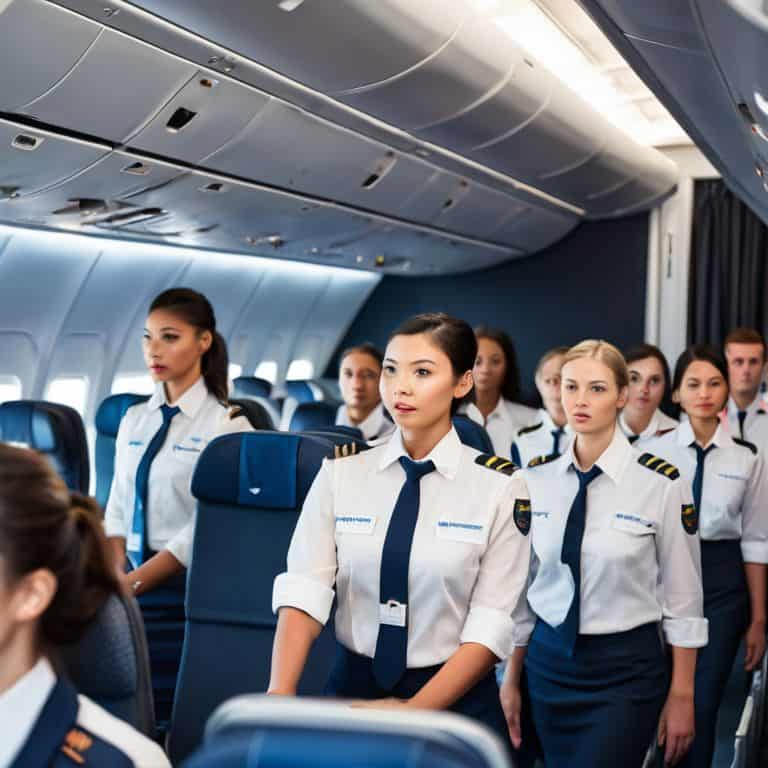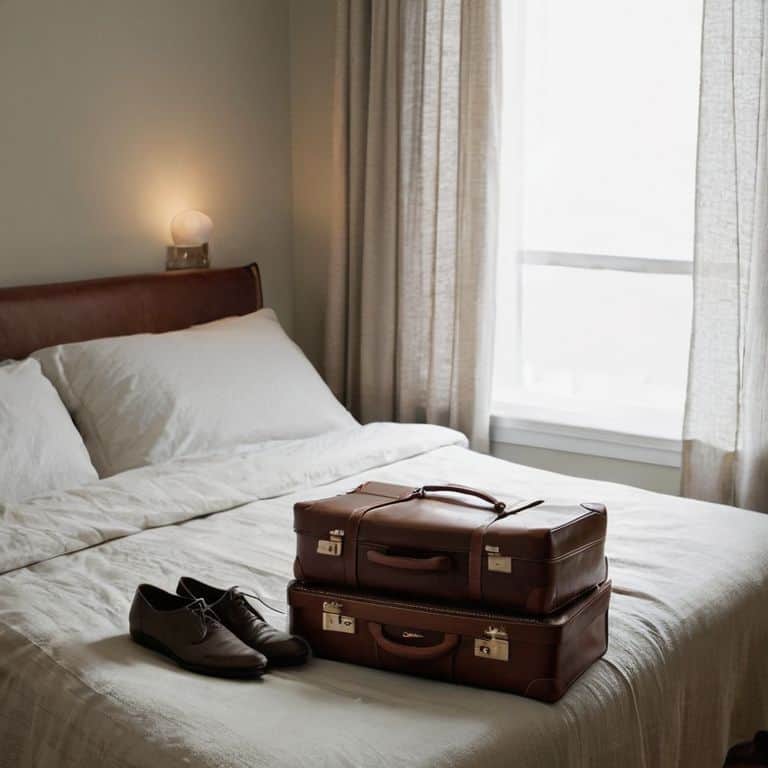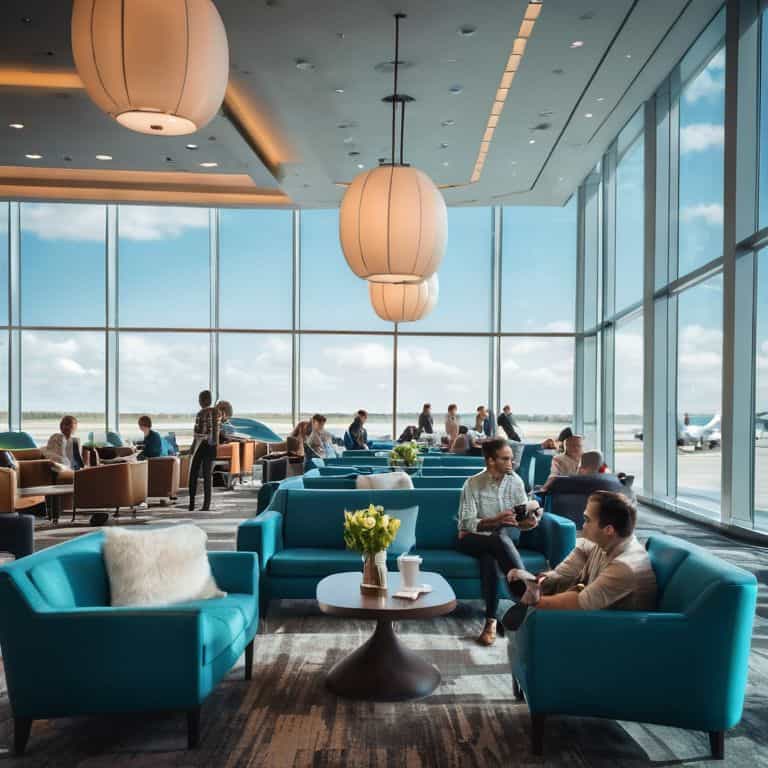As I reflect on my journey as a first-class flight attendant, I’m often reminded of the misconception that the training process for international cabin crew is all about following strict protocols and procedures. But the truth is, it’s so much more than that – it’s about creating a sense of home in the sky for our passengers, no matter where they’re from or where they’re headed. I still remember my own training days, where I learned the art of making every passenger feel like royalty, and how that’s shaped my approach to providing exceptional service.
In this article, I’ll share my personal insights and practical advice on how to navigate the training process for international cabin crew with ease and confidence. You’ll learn the essentials of creating a luxurious experience for your passengers, from the initial welcome to the final farewell. I’ll also reveal the secrets to staying calm under pressure, managing diverse personalities, and providing exceptional service that exceeds expectations. By the end of this guide, you’ll be equipped with the knowledge and skills to provide a truly unforgettable experience for your passengers, and make your mark as a exceptional cabin crew member.
Table of Contents
Guide Overview: What You'll Need
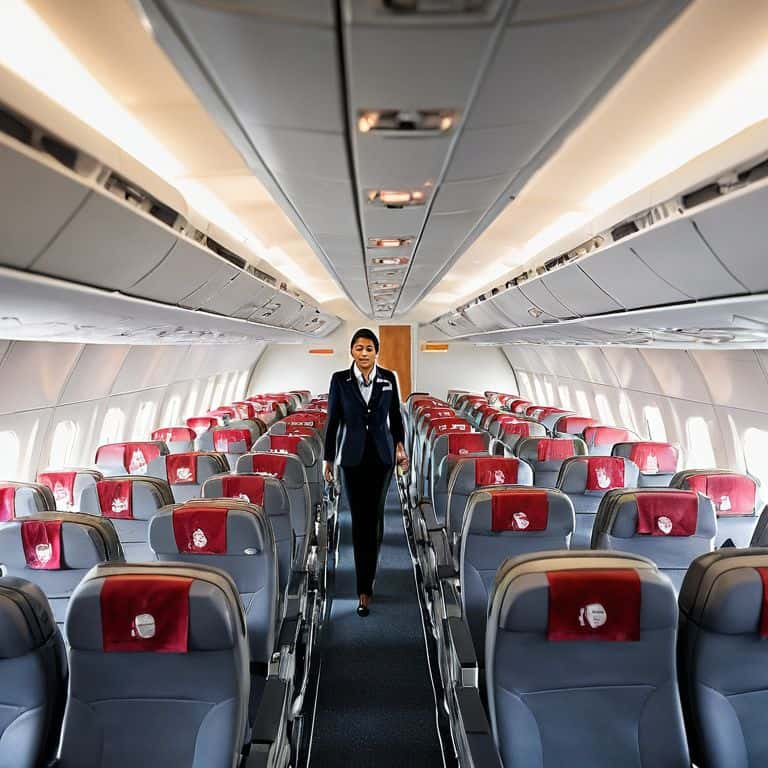
Total Time: several weeks to several months
Estimated Cost: $500 – $2,000
Difficulty Level: Hard
Tools Required
- Computer (with internet connection)
- Headset (for online training modules)
- Notebook (for taking notes and studying)
- Pen (for writing and filling out forms)
Supplies & Materials
- Uniform (specific to the airline)
- Safety Equipment (such as a life jacket and fire extinguisher)
- First Aid Kit (for training purposes)
- Emergency Procedure Manual (for study and reference)
Step-by-Step Instructions
- 1. First, immerse yourself in the world of aviation by learning about the history and culture of the airline you’re about to represent, from its humble beginnings to its current status as a global leader in luxury travel. This understanding will help you connect with passengers from diverse backgrounds and provide a more personalized experience.
- 2. Next, familiarize yourself with the safety procedures and protocols that are in place to ensure the well-being of all passengers and crew members. This includes knowing the location of emergency exits, fire extinguishers, and first aid kits, as well as being trained in basic life support and emergency response.
- 3. Then, learn about the cabin layout and amenities of the aircraft you’ll be working on, including the location of galleys, lavatories, and passenger seating areas. This knowledge will help you navigate the cabin with ease and efficiently attend to passengers’ needs.
- 4. After that, practice effective communication skills, which are essential for providing exceptional customer service and handling any conflicts that may arise during the flight. This includes active listening, clear and concise speech, and empathy towards passengers who may be experiencing stress or anxiety.
- 5. Once you’ve mastered the basics, move on to wine and cuisine training, where you’ll learn about the different types of wine, champagne, and fine dining options available on board. This will enable you to make expert recommendations to passengers and enhance their overall dining experience.
- 6. Next, participate in role-playing exercises that simulate real-life scenarios, such as handling medical emergencies, dealing with difficult passengers, and providing personalized service to VIP guests. These exercises will help you develop the skills and confidence you need to handle any situation that may arise during the flight.
- 7. Finally, stay up-to-date with ongoing training and education to ensure that your skills and knowledge remain current and relevant in an ever-changing industry. This may include attending workshops, seminars, and online courses that focus on topics such as cultural awareness, conflict resolution, and customer service excellence.
Behind Cabin Doors
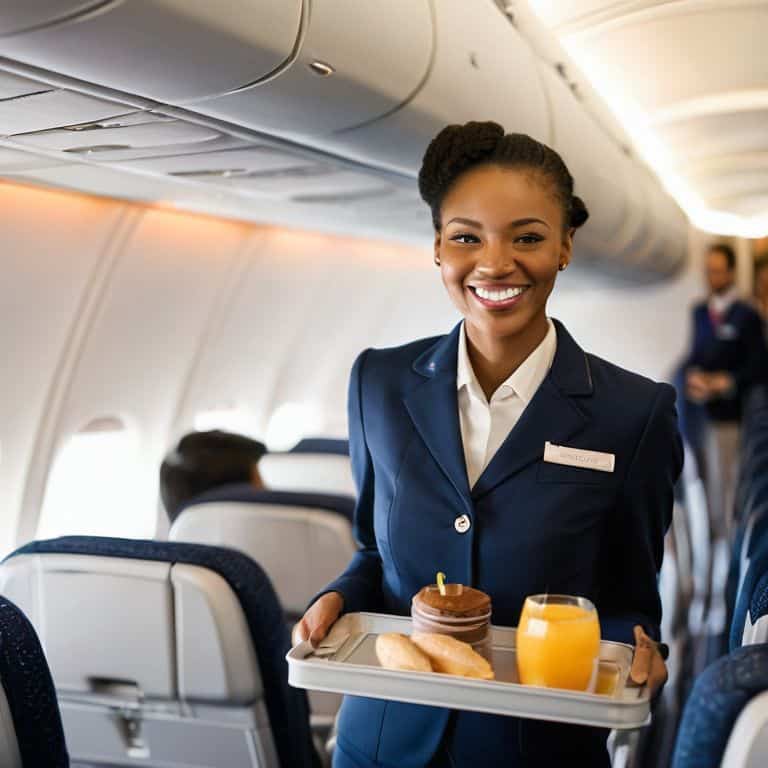
As I reflect on my own journey, I realize that cabin crew certification programs are just the beginning of a lifelong learning process. Behind the cabin doors, it’s not just about serving drinks and meals, but about creating a sense of warm hospitality that transcends borders and cultures. I’ve had the privilege of undergoing airline specific training requirements that have taught me the nuances of cultural awareness and how to tailor my service to meet the unique needs of passengers from diverse backgrounds.
In my experience, inflight service standards and protocols are crucial in ensuring a seamless and enjoyable experience for all passengers. From the moment passengers step into the cabin, they expect a certain level of service that is both personalized and professional. As a first-class flight attendant, I’ve learned to balance these expectations with the need for emergency evacuation procedures training, which is an essential part of our role.
As I look back on my time in the air, I’m reminded of the importance of crew resource management techniques in ensuring the smooth operation of the cabin. By working together as a cohesive team, we can provide a truly exceptional experience for our passengers, one that is both memorable and unforgettable. Whether it’s a special request or a unexpected challenge, our training and teamwork enable us to rise to the occasion and deliver outstanding service.
Cultural Awareness for Flight Attendants
As I reflect on my time behind cabin doors, I’m reminded of the importance of cultural awareness in our line of work. A gentle bow upon greeting, the correct use of titles and last names, or even the simple act of serving meals with the correct hand – these subtle nuances can make all the difference in a passenger’s experience. I recall a particularly memorable flight from Dubai to Tokyo, where a thoughtful gesture of serving sake in traditional ceramic cups earned us beaming smiles from our Japanese guests.
In these moments, I’m grateful for the rigorous training that taught me to navigate the intricacies of international etiquette. It’s a delicate dance, one that requires empathy, observation, and a deep appreciation for the diverse backgrounds of our passengers. By embracing these differences, we can transform a flight into a meaningful encounter, one that lingers long after the plane touches down.
Emergency Evacuation Procedures Training
As I reflect on my training days, I recall the intense simulations of emergency evacuations. Our instructors would mimic the sounds of alarm bells and the smell of smoke, testing our ability to remain calm and composed under pressure. We learned to prioritize the safety of our passengers, swiftly and efficiently guiding them to the nearest exit. It’s a sobering reminder that, despite the luxury and comfort we strive to provide, our primary responsibility is the well-being of those in our care.
In these drills, I saw my colleagues and I transform into a well-oiled machine, each of us playing our part in ensuring a smooth evacuation. It’s a testament to the rigorous training we undergo, and the trust we’ve built with one another. Even now, when I’m on board and hear the familiar sound of the safety demonstration, I’m reminded of the importance of being prepared for any situation that may arise.
Elevating Excellence: 5 Essential Tips for International Cabin Crew Training
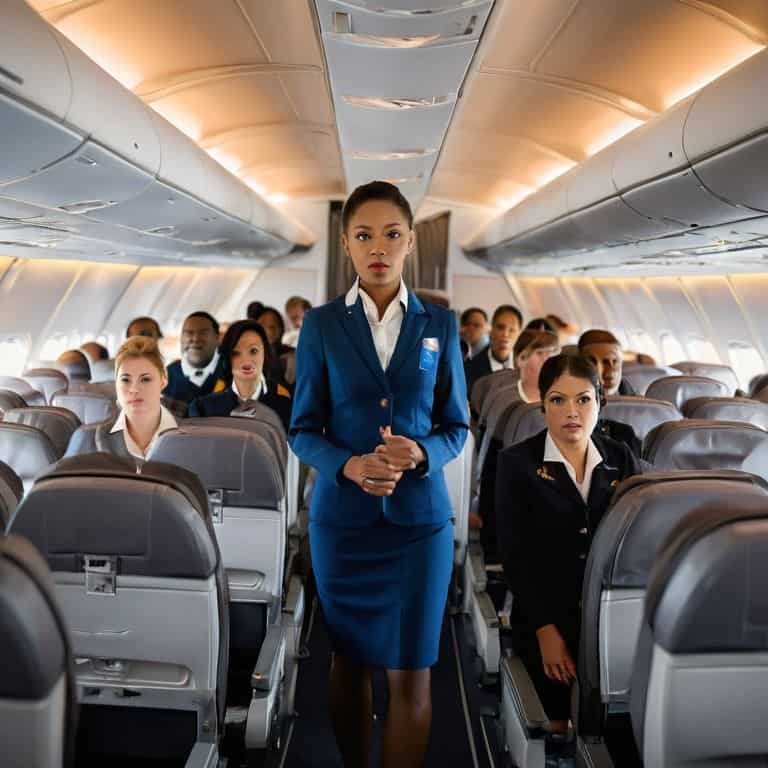
- I recall my own training days, where we focused on creating a sense of home in the sky for all our guests, regardless of their cultural background or destination
- Embracing the art of active listening is crucial – it’s not just about hearing passengers’ needs, but also about observing their body language and nuances
- A well-designed cabin crew training program should include role-playing exercises that simulate real-life scenarios, from turbulence to medical emergencies
- Staying up-to-date with the latest industry trends and technological advancements is vital – it’s what sets exceptional cabin crew apart from the rest
- Practicing mindfulness and self-care is essential for maintaining a serene and composed demeanor, even in the most challenging situations, and it’s a skill that I’ve honed through my own practice of hot yoga
Essential Insights from 35,000 Feet
I’ve learned that creating a sense of home in the sky for all passengers is not just about following protocols, but about understanding the nuances of human connection and cultural exchange
Through my experiences, I’ve come to realize that the art of training elite flight attendants lies in balancing technical expertise with emotional intelligence and empathy, allowing us to provide truly personalized service
As I reflect on my journey as a first-class flight attendant, I believe that the most critical aspect of our training is not just about mastering emergency procedures or cultural awareness, but about cultivating a deep appreciation for the diverse stories and experiences of our passengers
The Art of Elevating Service
The training process for international cabin crew is not just about mastering safety protocols and service standards, but about cultivating a deep understanding of the human experience – it’s where procedure meets passion, and where every passenger becomes a story worth telling.
Anja Novak
The Art of Elite Service: A Conclusion
As I reflect on the training process for international cabin crew, I’m reminded of the meticulous attention to detail required to create a truly exceptional passenger experience. From the initial introduction to the world of luxury aviation to the rigorous training in cultural awareness and emergency evacuation procedures, every step is designed to empower us as flight attendants to deliver unparalleled service. Whether it’s anticipating the needs of our guests or handling the unexpected with ease, our role is not just about ensuring safety but also about crafting a sense of home in the sky for all who fly with us.
As I look out at the world from 35,000 feet, I’m filled with a sense of wonder at the diverse stories and cultures that intersect in our cabins every day. The art of training international cabin crew is, at its core, about embracing this diversity and using it to create a unique and unforgettable experience for every passenger. It’s a privilege to be part of this world, and I hope that my insights have inspired you to see the magic that happens behind the cabin doors.
Frequently Asked Questions
What are the most significant challenges that international cabin crew face during training, and how do instructors address these issues?
As I reflect on my own training days, I recall the challenges of mastering multiple languages, handling diverse passenger needs, and staying calm under pressure. Instructors address these issues through immersive role-playing, cultural sensitivity training, and simulated emergency scenarios, all designed to prepare us for the unique demands of life at 35,000 feet.
How do airlines ensure that their crew members are equipped to handle diverse cultural backgrounds and needs of passengers from around the world?
As I’ve learned through my years as a first-class flight attendant, airlines prioritize cultural awareness training to ensure crew members can cater to diverse passenger needs. This includes workshops on international customs, language classes, and scenario-based training to handle sensitive situations with empathy and understanding.
What role does simulation training play in preparing international cabin crew for emergency situations, and how often do crew members participate in these drills?
Simulation training is a cornerstone of our emergency preparedness. I recall participating in regular drills every six months, where we’d practice evacuations, fires, and medical emergencies in a mock cabin setting. It’s astonishing how realistic these simulations can be, and they’ve proven invaluable in helping us respond with calm and precision when every second counts.
